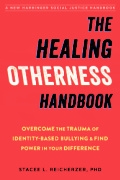How’s that New Year’s resolution going? If you’re struggling to maintain it, you’re not alone. What’s more, if your struggle to maintain has become a source of resolution shame, it’s time to re-examine the whole thing and do some necessary shame-purging in order to move forward.
This all came to me during a conversation about resolutions with two women who work at my neighborhood grocery store:
Bagging clerk: My resolution is to drink a glass of milk every night. My doctor told me I need more calcium.
Stacee: So, are you drinking your milk?
Her face could have been the inspiration for that emoticon with a horizontal line for a mouth which conveys disinterest, dissatisfaction, or shame. Well, it’s easy to guess what she was conveying, because no, she hadn’t drunk her nightly milk.
New Year’s resolution shame was at it again.
How Resolution Shame Shows Up
You probably recognize resolution shame from your own lives. Every year at the end of December, we make pledges to change things that bother us about ourselves, or that we otherwise wish to improve. Like a Phoenix arisen from the ashes of what we considered our inactive, underachieving, overspending lives of the last year, we will tell ourselves that We. Will. Change.
Except. We. Don’t.
When we don’t make the changes we envisioned, we fall into shame. Shame’s power is that it doesn’t just come as a brief chastising voice that says ‘tsk tsk’ before sending us back along our path toward change. Not shame! Shame comes roaring into our lives, pointing accusatory fingers while whispering insidious messages that begin with:
“You’ll never be!”
“You’re not…!”
“You don’t deserve…!”
What Resolution Shame Does
Shame is the enemy of forward momentum, positivity, and light. It sucks us in; and before we know it, we aren’t just avoiding the gym and the keto diet we promised ourselves on Dec. 31. We’re curled up with Netflix, eating pizza and ice cream. Or, we break sobriety. Or, we try to shop our way out of shame through the January clearance sales.
This is how we hold shame in place. Whatever we learned at an earlier time in our lives to shield us from shame, whether food, porn, gambling, shopping, heroin, or simply isolating…is precisely what we return to when we re-experience it. The paradox of this is that our resolutions reflect efforts toward what we view as improvements. Even slight setbacks in achieving resolutions create the shame avalanche. Now buried in our shame, we return to the thing we tried to get away from in the first place.
Get how this works?
Returning to your Resolution, Shame-Free
If you truly want to create changes which are reflected in your resolution, the first thing you’ve got to do is remove the shame that holds you locked in place. Here’s how:
- Bring to mind your resolution once again and be clear on why you want this. What will it improve for your life? How will things be better as a result? It’s helpful to jot this stuff down in a journal, or to create a vision board with pictures from magazines. This effort will help you have a pictorial representation or written account of your vision. For the milk-drinking bagging clerk at my store, a vision board might include pics of a frothing class of milk, a few athletes, a healthy skeleton, and a gentle old Holstein cow blinking her lashes becomingly at the camera. Fun, huh?
- Notice what hinders you as you create this vision. What’s the message you’re noticing that themes around “You’re not…”, “You don’t…”, “This is stupid…”etc.? Nab that slithering monster! That’s your shame right there. What does it look and sound like? Who’s voice is it? Adults who were abused as children may recognize the shaming voice of a parent, coach, teacher, or other adult. Others of us recognize the voice as our own, coming from a particularly wounded time in our lives. Get clear here.
- The minute you recognize the shame voice, write down as many qualities about it as you can. Draw its form, if you wish…snakes and slithery things may be a way to represent this for some, a roaring beast may be real for someone else. Just notice shame’s qualities.
- Be clear that this is just an old part of you; but it isn’t you. You are not your shame. It’s really just an old collection of thoughts that someone or something tried to insert a long time ago; and that you’ve chosen to accept until now.
- Make a determination of what you want to do with shame. If you recognize it for what it is, you can notice it when it comes up, “Oh you! I know who are and what you’re trying to do. No thanks.” You can then consider your present circumstances and clarify what precisely it is that you want to achieve.
- Whenever you are less than perfect, which is most of the time for most of us, shame will try to set in. It will keep you believing that you must prove something, and that when you don’t, you’re less than.
Don’t let that shaming voice win. It’s time to put those thoughts to rest.
I’ll give some follow-up shame-busting exercises in future 2019 blogs. Stay tuned!


